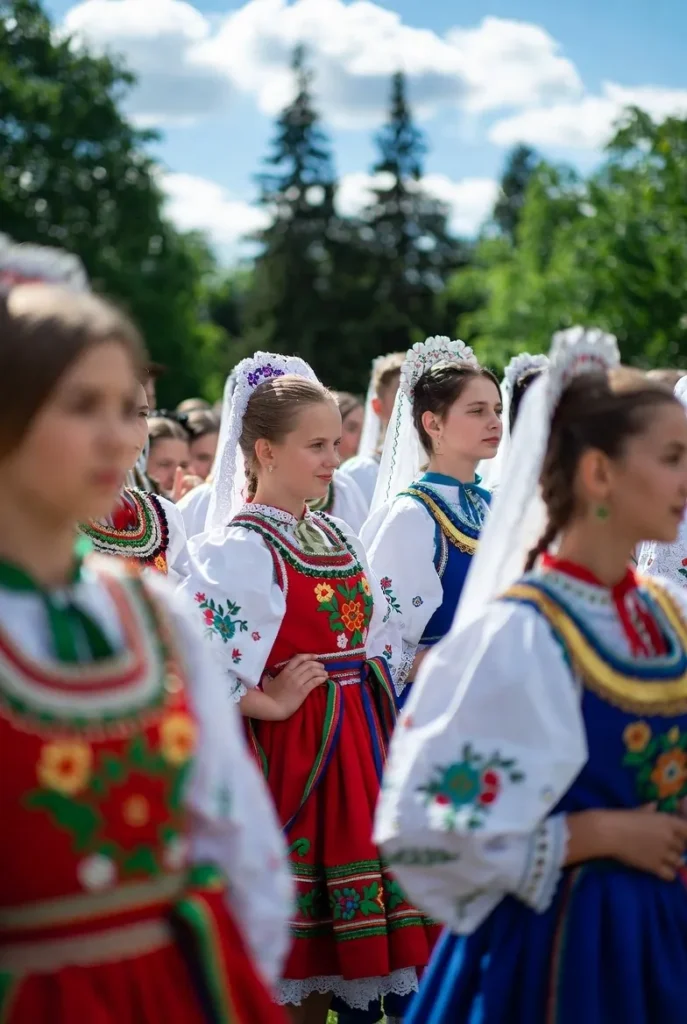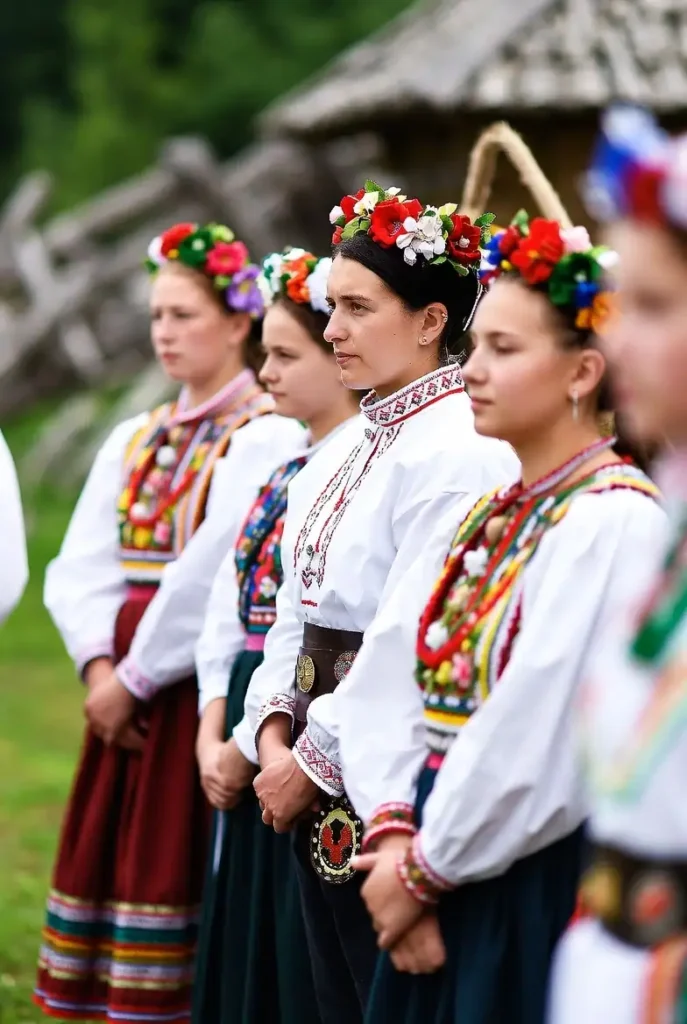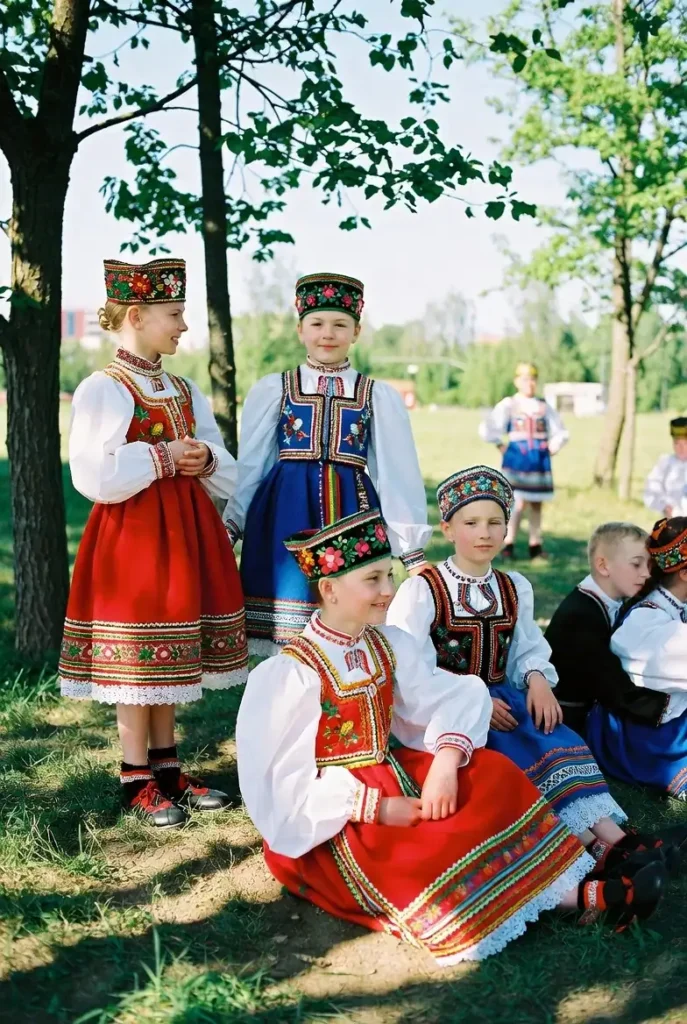Introduction
Polish Traditional Clothing is more than just fabric and design—it’s a symbol of national pride, artistry, and history. From the colorful folk costumes of Kraków to the elegant highland outfits of Podhale, every region in Poland has its own story woven into its traditional Polish clothing. These clothes not only reflect the country’s rich past but also the identity and craftsmanship of its people.

Regional Styles and Meanings in Polish Traditional Clothing
One of the most fascinating aspects of Polish Traditional Clothing is the rich regional diversity found across the country. For example, the well-known Kraków costume stands out with its bright red skirts, floral embroidery, and beautifully decorated vests. On the other hand, the Górale (Highlander) attire from southern Poland features heavy wool coats, hand-carved leather belts, and bold patterns that symbolize strength and independence.

Materials and Craftsmanship in Polish Traditional Clothing
Traditional Polish Traditional Clothing is often handmade using natural fabrics such as wool, linen, and cotton, which provide durability and comfort. The detailed embroidery, especially around the collars and sleeves, reflects Poland’s long-standing textile art traditions. Each stitch and color pattern carries symbolic meaning, representing values like love, courage, or fertility. These garments were carefully crafted and often passed down from one generation to the next, making them cherished family heirlooms. The craftsmanship seen in Polish Traditional Clothing highlights both cultural heritage and the pride of the artisans who continue these traditions today.

Modern Influence
The charm of Polish Traditional Clothing continues to inspire fashion designers even in the modern era. Many contemporary Polish designers blend folk-inspired embroidery, vibrant patterns, and traditional fabrics into everyday clothing and high-fashion collections. This creative fusion allows cultural heritage to stay relevant while adapting to current style trends. As these designs gain recognition across Europe and beyond, Polish Traditional Clothing remains a beautiful reminder that tradition and modern fashion can coexist, preserving history while celebrating artistic expression.
Conclusion
Polish Traditional Clothing is not just a memory of the past—it is a living symbol of Poland’s cultural identity. Whether showcased at festivals, weddings, or featured in modern fashion collections, these garments continue to tell a timeless story of craftsmanship, heritage, and national pride. Each design and embroidery pattern reflects the values, emotions, and history of the people who created and wore them.
